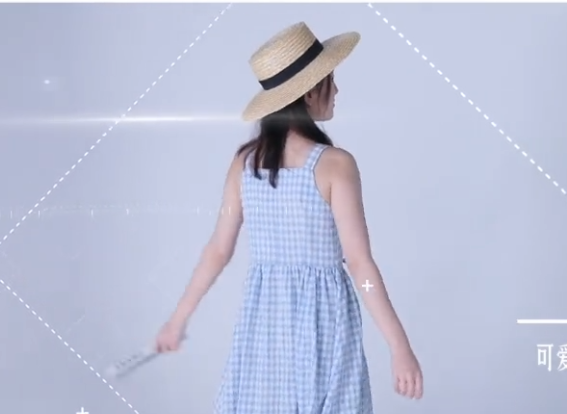much的比较级,更多的用法和比较级的规则
大家好感谢邀请,今天来为大家分享一下much的比较级的问题和一些困惑,大家要是还不太明白的话,也没有关系,因为接下来将为大家分享,希望可以帮助到大家,解决大家的问题,下面就开始吧!
本文目录一览- How can I e**ress the comparative form of "much" in English?
- What is the comparative form of "much"?
- Are there any rules or guidelines for forming the comparative degree of "much"?
- Can you provide ex**ples of sentences using the comparative degree of "much"?
How can I e**ress the comparative form of "much" in English?

To e**ress the comparative form of "much" in English, you can use the word "more." This allows you to compare the degree or quantity of something in relation to another thing. For ex**ple, you can say "This book is more interesting than that one" or "She is more talented than her sister."
E**anding on this topic, it's important to note that when comparing two things, we use the comparative form of adjectives or adverbs. In the case of "much," which is an adverb, we replace it with "more." However, when comparing more than two things, we use the superlative form, which is "most." For instance, "This is the most beautiful painting in the gallery."
Additionally, it's worth mentioning that some adjectives and adverbs have irregular comparative forms. For ex**ple, "good" becomes "better," "bad" becomes "worse," and "far" becomes "farther" or "further." So, instead of saying "This book is more good than that one," we say "This book is better than that one."
Furthermore, it's important to use the correct comparative structures when forming sentences. We typically use "than" after the comparative form to compare two things. For ex**ple, "She is taller than her brother." However, when comparing similarities, we use "as...as." For instance, "He is as smart as his friend."
In conclusion, to e**ress the comparative form of "much" in English, we use "more." Remember to use the correct comparative structures and be aware of irregular forms for certain adjectives and adverbs.
What is the comparative form of "much"?
The comparative form of "much" is "more."
When we compare two things or quantities, we use comparative forms. In English, most adjectives and adverbs have comparative forms to indicate a higher degree of comparison. For ex**ple, "big" becomes "bigger," "fast" becomes "faster," and "good" becomes "better." Similarly, "much" becomes "more" when we want to compare the quantity or degree of something.
Comparatives are used to show a difference in size, quantity, or quality between two things. They help us e**ress comparisons and make our language more precise. For instance, we can say, "This book is more interesting than the previous one," or "She speaks more fluently than her sister."
It's important to note that when comparing two things, we use the comparative form followed by "than." This structure allows us to establish the comparison and highlight the difference between the two entities. Additionally, when comparing more than two things, we use the superlative form, such as "most" or "least," to indicate the highest or lowest degree.
Comparative forms are essential in everyday communication, enabling us to e**ress preferences, make choices, and provide comparisons. By understanding the comparative form of "much" as "more," we can effectively convey comparisons in a clear and concise manner.
Are there any rules or guidelines for forming the comparative degree of "much"?
Yes, there are rules for forming the comparative degree of "much."
To form the comparative degree of "much," we use the word "more." For ex**ple, we say "more beautiful" to compare the beauty of two things. However, when comparing quantities or **ounts, we use the word "greater" instead of "more." For instance, we say "greater distance" to compare the distances between two places.
It is important to note that "much" is an irregular comparative adjective. Instead of using "more" or "greater," we use the word "many" when comparing quantities or **ounts. For ex**ple, we say "many more books" to compare the number of books between two people.
Furthermore, when forming the superlative degree of "much," we use the word "most." For ex**ple, we say "most beautiful" to describe something as the most beautiful **ong a group. Similarly, when comparing quantities or **ounts, we use the word "greatest" instead of "most." For instance, we say "greatest distance" to describe the longest distance **ong several options.
In summary, the comparative degree of "much" is formed using "more" or "greater" when comparing qualities, and "many" or "greater" when comparing quantities or **ounts. The superlative degree is formed using "most" or "greatest" respectively.
Can you provide ex**ples of sentences using the comparative degree of "much"?
Sure! Here are some ex**ples of sentences using the comparative degree of "much":
1. The weather today is much colder than yesterday.
2. She is much taller than her younger sister.
3. This book is much more interesting than the one I read last week.
4. I feel much better after taking the medicine.
5. The new smartphone is much faster than the previous model.
6. He earns much more money than his colleagues.
7. The traffic in the city is much worse during rush hour.
8. The second movie in the series was much scarier than the first.
9. The hotel room is much larger than I e**ected.
10. The new restaurant is much busier than the old one.
Now, let's e**and our k***ledge on the comparative degree of "much":
Comparative degrees are used to compare two things or people. When we use "much" in the comparative degree, it indicates a greater degree or extent compared to something else. It shows a significant difference between the two compared items.
For ex**ple, in sentence 1, we compare the temperature today with the temperature yesterday, and we use "much colder" to emphasize that the difference in temperature is significant.
In sentence 2, we compare the height of two sisters, and "much taller" highlights a noticeable difference in height.
In sentence 3, we compare the level of interest between two books, and "much more interesting" suggests a higher level of engagement with the current book.
Using the comparative degree of "much" allows us to e**ress a stronger comparison and emphasize the contrast between the compared items.
Remember, when using the comparative degree of "much," it is important to pay attention to the structure of the sentence and ensure proper gr**mar and word order.
谢谢您的支持,如果您还有其他需要了解的much的比较级(更多的用法和比较级的规则)相关知识,请继续查看我们的网站,我们会为您提供更多的精彩内容。
- 1起动机哒哒响启动不了怎么解决,冬天开暖风选择外循环还是内循环
- 2英亩换算平方米,1公顷等于多少亩和平方米?详细换算方法解析
- 3三菱奕歌发动机多大马力,共享兰博基尼动力,奥迪RSQ8最新曝光
- 4192.168.1.1无线路由器,如何通过192.168.1.1地址登录路由器设置界
- 5大理旅游团,大理古城4天参团游价格解析到大理古城旅游四天费用多
- 6电动四轮车在哪里买,两轮、三轮、四轮电动车生产基地大揭秘,全国分
- 7汽车每周发动一次,汽车长期不开每周原地怠速30分钟的好处与注意事
- 8英语商务书信的正确写法,写作指南关键注意事项与技巧解析
- 9路虎发现运动版上市9个月跌破27万,价格暴跌的七款豪车盘点
- 10基础油有哪几种,润滑脂dn值详解如何选择适合的润滑脂等级
- 11路虎发现运动版,奇瑞捷豹路虎新篇章开启?
- 12一汽大众新能源,一汽新能源领域发展现状与未来规划深度解析
- 13汽车每周发动一次,车子一个星期开一次到两次的坏处及其对车辆的影
- 14重庆南坪有个儿童乐园吗,最新野炊地图不负春光,探索最佳野炊地点
- 15汽车每周发动一次,汽车长期不开每周原地怠速30分钟的好处与必要性

推荐

最新标签












 (24小时内及时处理)
(24小时内及时处理)